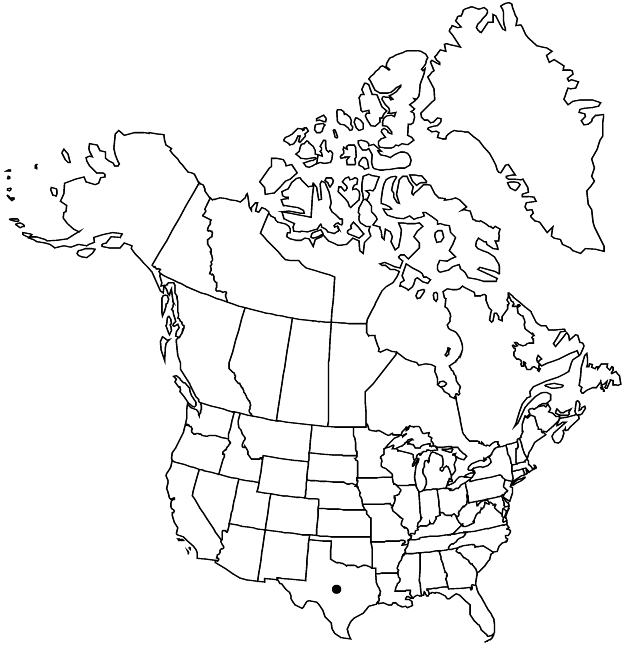Sedum robertsianum
Bull. Torrey Bot. Club 63: 201, fig. 1. 1936,.
Herbs, perennial, tufted, glabrous. Stems decumbent, branched basally, (fleshy), with numerous decumbent branchlets, not forming rosettes. Leaves (persistent), alternate, spreading, sessile; blade yellow-green, not glaucous, ovate, subterete, somewhat flattened, 5–8 × 3–4 mm, (thick, turgid), base not spurred, not scarious, apex apiculate, (surfaces minutely papillose, caused by reflections of inner facets of windowed cells). Flowering shoots (axillary), erect, simple or branched, 5–10 cm; leaf-blades ovate, base not spurred; offsets not formed. Inflorescences cymes, 6–12-flowered, simple or 2-branched, sometimes with short branch at base with solitary flower; branches not recurved, sometimes forked; bracts similar to leaves, smaller. Pedicels absent or to 0.5 mm. Flowers (4–) 5-merous; sepals spreading to reflexed, distinct, yellow-green, lanceolate, unequal, ca. 2 × ca. 0.8 mm, apex obtuse; petals spreading, nearly distinct, bright-yellow, lanceolate, canaliculate, ca. 4 mm, apex acute; filaments color unknown; anthers color unknown; nectar scales pale-yellow, oblong. Carpels spreading, distinct, tan to reddish. 2n = 28.
Phenology: Flowering summer–fall.
Habitat: Shallow, calcareous soil
Elevation: ca. 1300 m
Distribution

Tex., Mexico (Coahuila)
Discussion
Sedum robertsianum occurs in the Del Norte and Glass mountains of Brewster County.
Sedum robertsianum is a somewhat confusing taxonomic entity. In a treatment contributed in the 1970s for the Flora of the Chihuahuan Desert Region (M. C. Johnston and J. S. Henrickson, in prep.), R. T. Clausen placed S. robertsianum in synonymy with Mexican S. parvum but did not assign it to subspecies status. However, only subsp. nanifolium occurred in both Texas and Mexico. Later, Clausen (1981) made S. robertsianum a subspecies of S. parvum. In a study of the systematics of the S. parvum complex, G. L. Nesom and B. L. Turner (1995) treated S. robertsianum as a species of uncertain status. They cited specimens from the Del Norte Mountains (the type locality of S. robertsianum, see Clausen 1981) as S. nanifolium, which they elevated from S. parvum subsp. nanifolium. It is possible that there are two species of yellow-flowered sedums within one mountain range in western Texas. It is also possible that there is only one species, and either S. robertsianum is synonymous with S. nanifolium, or it is a distinct species and the only Sedum in the Del Norte Mountains of western Texas.
Selected References
None.